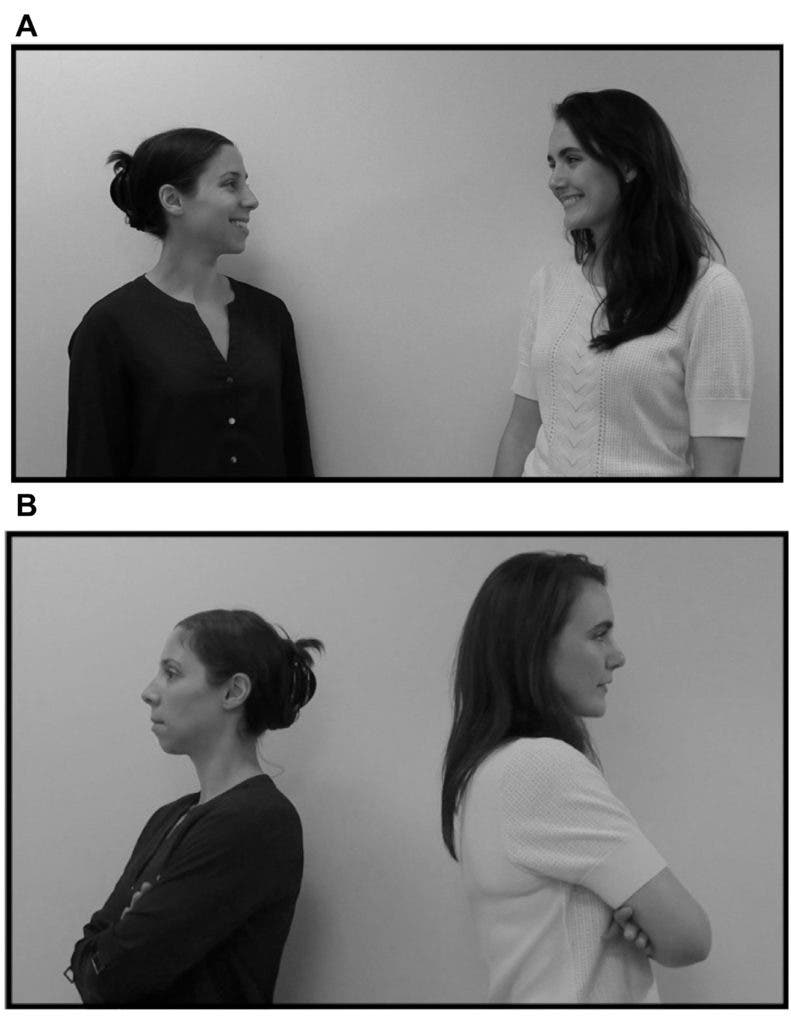
In the company of an old friend, conversation and humor flow naturally. However, when we have to interact with a stranger, things can feel awkward even when you’re both laughing along — and this can be easily sensed from the outside as well. According to a new study, infants as young as five months old are capable of differentiating laughter between friends and between strangers, suggesting that the ability to assess the nature of social relationships develops early in our lifetimes.
“Infants’ sensitivity to different kinds of laughter might be one of the early emerging tools they use to understand and navigate the complex social world,” says Athena Vouloumanos, an associate professor in New York University’s Department of Psychology and one of the co-authors of the study.
“Very brief instances of shared laughter can reveal rich information about people’s relationships, detectable in infants as young as five months of age and universally by adults around the world,” adds co-author Gregory Bryant, a professor in UCLA’s Department of Communication.
When a group of people laughs simultaneously (a “colaughter”), it’s possible to gauge the nature of their relationship — whether friends, acquaintances, or strangers — based on subtle vocalization cues. In 2016, Bryant and colleagues at UCLA published a study that found that listening to other people laugh together, even for just one second, can be enough information to gauge whether or not those people are friends. Their findings suggest that laughter between friends is generally more spontaneous — and that this ability knows no cultural boundaries.
“In a highly cooperative species such as ours, it is important for individuals to correctly identify the social alliances of others,” Bryant said in a statement. “If laughter helps people accomplish that, it has likely played a role in social communication leading to cooperative interactions.”
In their new study, Bryant and Vouloumanos wanted to investigate how early on this ability develops by exposing five-year-olds to laughter between strangers and between friends. In the first experiment, the researchers gauged how long infants listened to audio recordings of colaughter which altered between instances of friends and strangers. The findings suggest that infants listened longer to colaughter between friends. Previous research established that infants elicit preferences through longer listening or looking times.
The second experiment was visual. The infants saw two types of videos on a screen, showing either two friends or two strangers interacting. To signal friendship, the two actors faced and smiled each other, while in the “strangers” condition, the actors turned their backs to each other. Both videos froze on a still frame of the actors facing the infant with neutral expressions; at this moment, alternating audio records of laughter between friends and between strangers were played. In some instances, the researchers mixed the audio recordings — stranger colaughter with visual interactions between friends and friend colaughter with visual interactions between strangers.
As expected, the infants fixed their gaze for a longer time when colaughter and interactions were mismatched. This is a normal reaction in response to the incongruence between colaughter and the nature of the relationship.
“The ability to rapidly evaluate acoustic features in colaughter that reveal social relationships between individuals appears early in human infancy and might be the product of an adaptive affiliation detection system that uses vocal cues,” the authors conclude.
The findings appeared in the journal Scientific Reports.


